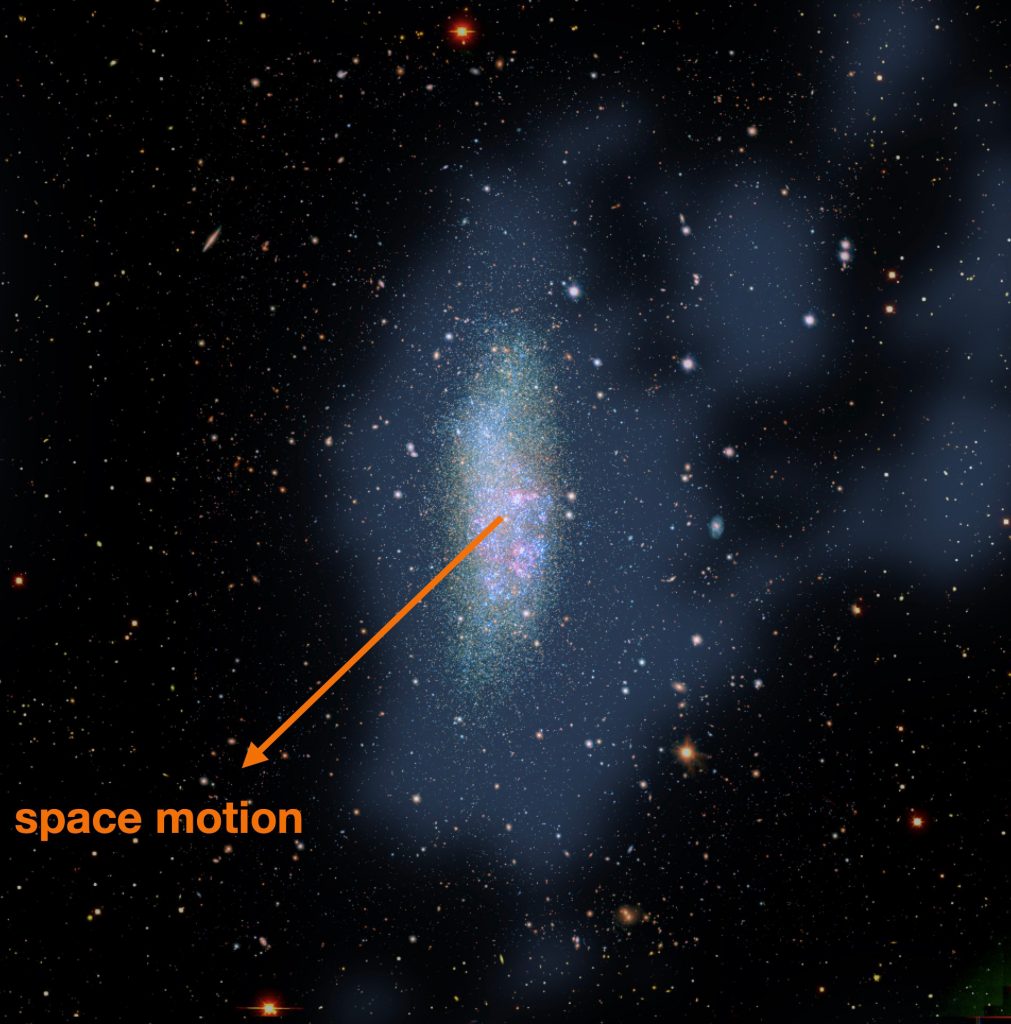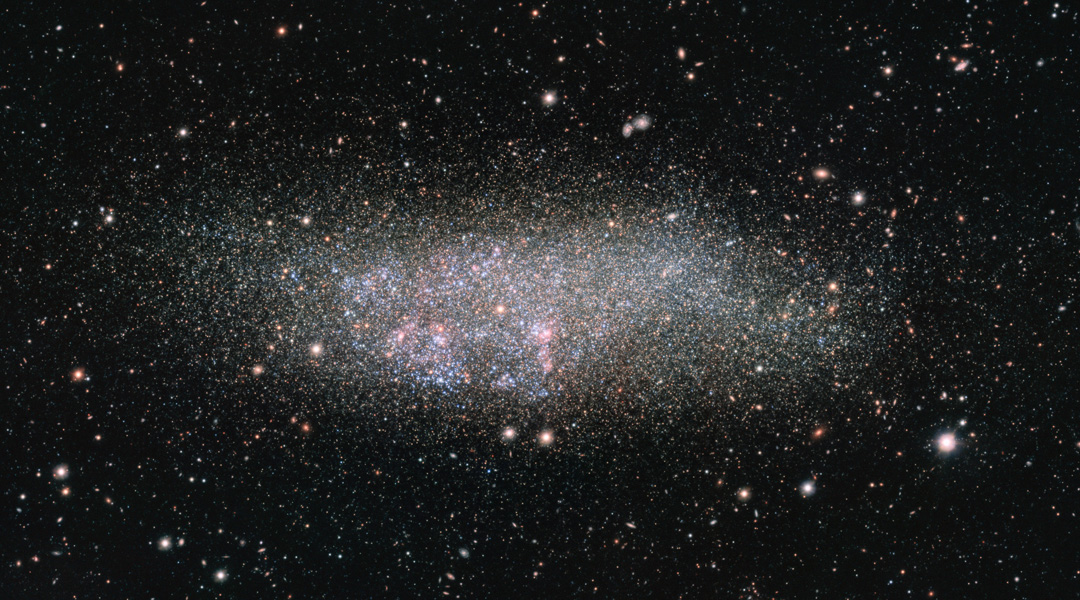“It was the eccentric rotation, that’s what got us interested,” explained Yanbin Yang, a researcher at the Paris Observatory. Yang is part of a team who have just published observations of strange behavior in an isolated dwarf galaxy known as WLM. This galaxy was seen traveling through the Local Void, a relatively empty region of space close to our home, the Milky Way.
“If we observe a galaxy in equilibrium, then both sides of the disk would have the same speed, but we saw in WLM that one side of the galaxy was rotating faster than the other,” Yang continued. “This is not normal.”
So, Yang and collaborators set out to investigate this strange behaviour. First, they examined the distribution of hydrogen gas in WLM using the South African MeerKAT radio telescope. Hydrogen gas can be detected at radio wavelengths when the atom’s sole electron changes spin. This causes it to drop into its lowest energy state and release radiation. With this approach, they discovered four large, extended clouds connected to the main galaxy by small gas bridges, indicating the clouds were likely part of WLM at one point. They lay around three to five kiloparsecs to the northwest, in the opposite direction to WLM’s motion through space, and were thought to comprise around ∼10% of the mass of the main galaxy.

Since WLM is known to be very isolated, possible interactions with neighboring galaxies, which might account for the strange rotation, are unlikely to play a role. Only two other possible events could strip material in this way and create the observed rotation: a merger with another galaxy nearing completion or ram-pressure stripping. This latter phenomenon arises from the interaction between a small galaxy and its surroundings. As the galaxy accelerates into a dense neighboring region, the resulting pressure strips the galaxy of its gas. This is typically observed when dwarf galaxies are attracted towards their higher mass counterparts.
To investigate the merger hypothesis, they retrieved optical data from the Subaru telescope in Hawaii, and with this instrument, observed the positions of the stars within WLM. During a merger between two galaxies, all the material, including the gas, dust, and stars, would be caught up and redistributed in the motion. So, if these clouds were the result of a merger, then they would expect stars to be distributed throughout. However, they found that none of the stars were located in the four extended clouds, but were all concentrated in the main body of WLM.
It appeared that ram-pressure stripping was much more likely to have created the clouds. However, the nearest galaxies that could cause this event in WLM — the Milky Way or M31 — are almost a thousand kiloparsecs away. This is much too distant to produce the observed structure.
The only explanation left was that ram-pressure stripping was caused by interactions with material within the Local Void. The team were surprised by this as the Local Void is believed to contain only a handful of galaxies and shows little evidence of hosting any other matter.
To test if such a scenario was possible, they ran around a hundred simulations, covering a wide range of physical parameters. They found that their models were able to recreate the observations when they adopted low masses for WLM and high densities for the Local Void material.
“This completely changes our view of isolated objects [like WLM], and the Void in our local universe,” said Yang.
With these observations, Yang and collaborators have shown that ram-pressure stripping is not just limited to dwarf galaxies orbiting higher mass galaxies or galaxy clusters. This opens up the possibility of new avenues for evolution in isolated galaxies.
These results also have cosmological implications. The discovery of a previously unknown structure in the Local Void that can cause ram-pressure stripping provides a better estimate of its density. This value could be used to improve the accuracy of input parameters for cosmological simulations, allowing them to produce more realistic models of the universe. It is unclear whether this could be applied to other under-dense regions further afield.
Regardless, they have found that regions of space previously thought devoid of material are not so empty after all.
Reference: Yanbin Yang et al., Evidence of ram-pressure stripping of WLM, a dwarf galaxy far away from any large host galaxy, Astronomy & Astrophysics (2022). DOI: 10.1051/0004-6361/202243307
Feature image credit: Yanbin Yang, et al.

















